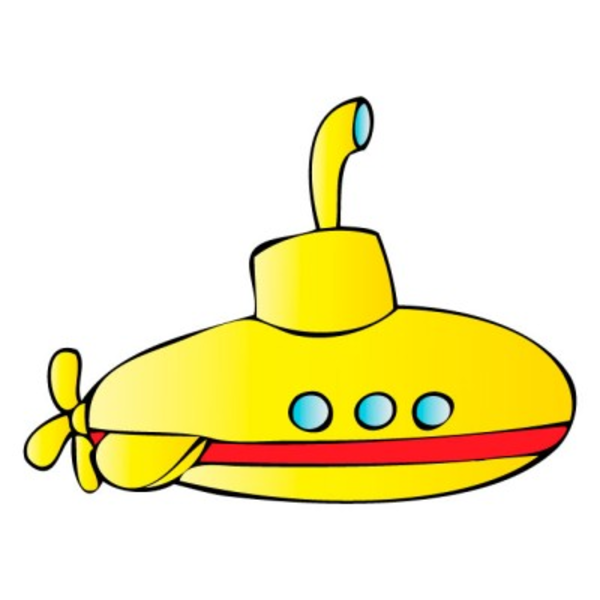
Vickers Armstrong in Barrow-in-Furness constructed Resolution and Repulse and Cammell Laird in Birkenhead constructed Renown and Revenge. HMS Repulse in the Firth of Clyde in 1979. Traditional battleship names were used, signifying that they were the capital ships of their time. The option of buying a fifth unit, planned as Ramillies, was cancelled in February 1965 as a cost-savings measure by the government of Prime Minister Harold Wilson.

Two pairs of the boats were ordered in May 1963 from Vickers Shipbuilding Ltd, Barrow in Furness and from Cammell Laird and Co. The SSBNs would then take over the nuclear deterrent role from the RAF's V bombers from 1968 onwards.
#SUBMARINE CLIPART SERIES#
By the end of the series of meetings, the UK had gained the much more impressive Polaris system, and would start development of a new submarine to launch it. With development of their Polaris-derived warheads well along, a suitable launch platform would be developed, if need be.įaced with a clear failure in policy terms, Kennedy gave up on the idea of strong-arming Britain into accepting a dual-key arrangement. A meeting was arranged to settle the issue, and Macmillan stated in no uncertain terms that the UK would be retaining their independent deterrent capability, no matter what the cost. When this was reported in the House of Commons, a storm of protest broke out. McNamara first broached the idea of cancelling Skybolt with the British in November 1962. He wanted to bring the UK into a dual-key arrangement. McNamara was equally concerned about the UK also having its own nuclear force, and worried that the US could be drawn into a war by the UK. Skybolt was seen simply as a means of continuing the existence of a system he no longer considered credible, and given the rapidly improving capabilities of ICBM inertial guidance systems, a precision strike capability with free-fall bombs would no longer be needed. Robert McNamara was highly critical of the US bomber fleet, which he saw as obsolete in an age of ICBMs. The incoming Kennedy administration expressed serious doubts of both Skybolt and the US deterrent force in general. Under the agreement the UK's contribution to the programme was limited to developing suitable mounting points on the Avro Vulcan bomber, installing the required guidance systems that fed the missiles updated positioning information, and development of a British version of the US W47 warhead to arm it, the RE.179. With this range, the V bombers would have to fly only a few hundred miles from their bases before being in range for an attack on Moscow. The Skybolt was a 1,000-mile (1,600 km) range ballistic missile that allowed the launching bombers to remain well away from Soviet defences and launch attacks that would be basically invulnerable.

To address this problem, in May 1960 the British Prime Minister, Harold Macmillan arranged a deal with US President Eisenhower to equip the V bombers with the US-designed AGM-48 Skybolt. Free-fall nuclear weapons would no longer be a credible deterrent. But in the early 1960s developments in radar and surface-to-air missiles made it clear that bombers were becoming vulnerable, and would be unlikely to penetrate Soviet airspace. The Resolution class was the launch platform for the United Kingdom's strategic nuclear deterrent from the late 1960s until 1996, when it was replaced by the Vanguard-class submarine carrying the Trident II.ĭuring the 1950s and early 1960s, the United Kingdom's nuclear deterrent was based on the RAF's V-bombers.

All four boats were based at HM Naval Base Clyde (HMS Neptune), 40 km (25 mi) west of Glasgow, Scotland. They were built by Vickers Armstrong in Barrow-in-Furness and Cammell Laird in Birkenhead between 19. The class comprised Resolution, Repulse, Renown and Revenge. Each submarine was armed with up to 16 UGM-27 Polaris A-3 nuclear missiles. The Resolution class was a class of four nuclear ballistic missile submarines ( SSBN) built for the Royal Navy as part of the UK Polaris programme.


 0 kommentar(er)
0 kommentar(er)
